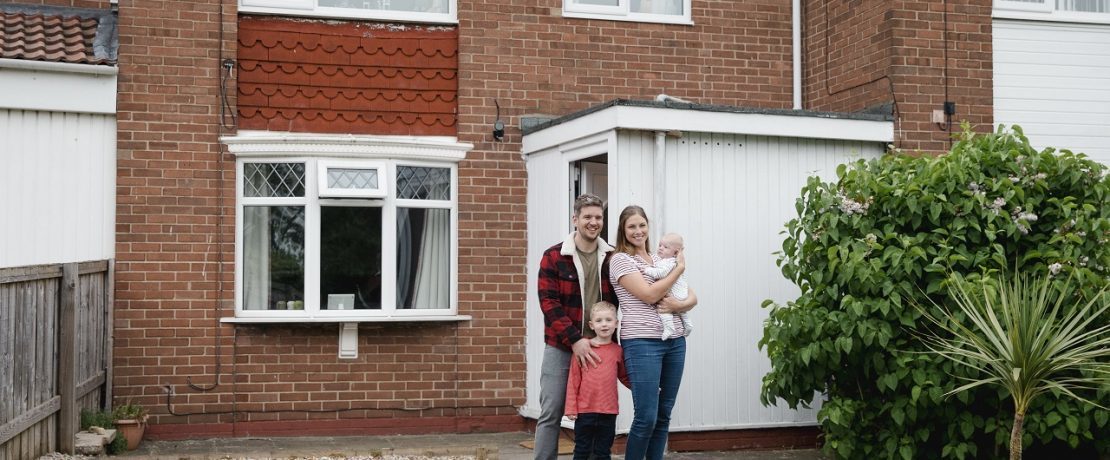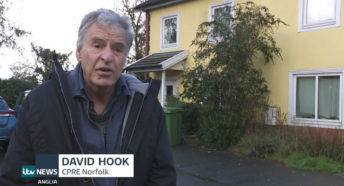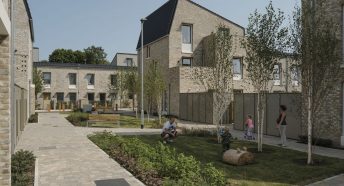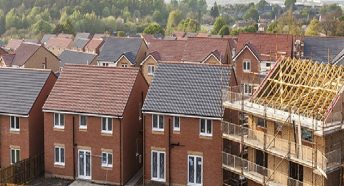Housing – what do we really want in Norfolk?
There are so many plans, targets, policies, regulations and legislative loopholes, as well as the usual round of hidden figures, trying to campaign for the housing we need in Norfolk is an absolute minefield.
Perhaps the question we should be asking is ‘what houses do we need’ and redesign our approach to secure those first.
We can then judge whether our councils, government and developers are on track to deliver.
If we look back in time, we may be able to learn from history.
Rebuilding Britain after the Second World War was a colossal undertaking, but there was a genuine desire to ‘build back better’. That saw improvements in house quality through improved standards, better design and layouts and a major programme of building truly affordable housing known as Council Houses.
We also saw a real attempt to protect the countryside for instance with green belts, as well as making sure houses were fit for purpose with gardens and minimum room sizes.
By the end of the 1970s we had high levels of home ownership, controlled through a strong planning system the envy of Europe, with prices within reach of all either to buy or rent, steady house values with some level of growth to reflect inflation, and high-quality properties. That is a situation we should look to replicate. What we must avoid is what happened next, as successive governments introduced new policies that over time has brought a housing crisis.
The 7 million council houses (now called ‘social rented housing’) became available for purchase in 1980 at bargain prices for the tenants, and effectively the building of new council houses stopped.
Despite our larger population today, less than half the number of social rented houses are available that existed as a direct result of these policies. Not only did these houses provide a quality home for those who could not, or did not wish, to purchase, but they helped regulate the whole market rather than open it up to investors. After all, housing is nothing less than a national infrastructure that supports the wellbeing of all of us.
The lack of social housing has driven a new private rented sector, hardly regulated and with rising rentals, unaffordable for many. Smaller new houses are snapped up by investors driving up prices beyond the reach of many people.
We have seen the brakes coming off lending. No longer are you limited to a mortgage no larger than 2½ or 3 times your salary. This acted as a moderator of prices.
And there has been the emergence of a new swathe of large national house developers, developing on an industrial scale, with the small local building firms all but disappearing.
To deal with this issue the Government have proposed to relax planning requirements to a new low level, with the intention of enabling more house building. Policy now allocates large areas of land for housing, and seeks to have ‘affordable’ houses built as part of all new estates, although planning loopholes enable developers to avoid providing many of these.
Sadly, this is not delivering the houses where they are needed, in the right numbers, of the right type and in the timescale required. After all, why would a development company build more houses than it can sell at the rising prices it needs to satisfy its investors’ demands for increasing dividends?
What we have today is a marketplace that is too expensive for many, either to buy or rent, rental levels that restrict the ability for younger people to save a deposit unless they stay at home, a swathe of land allocated for houses but not built on, massive profits for landowners with land prices now a major portion of development costs, and low delivery of social houses.
If that were not enough, building regulations are way behind where they need to be, and not only do new houses not meet the standards needed but there are many stories of low-quality building leaving buyers facing issues in their new homes.
But let’s get back to what we want
Communities will often identify the need for smaller, cheaper quality homes, housing suitable for older people and social rented housing in their towns and villages. They do not identify a need for large estates of 3 to 5 bedroomed housing, although there is still a need for some of this.
Getting there is not a short-term fix, but we must start that journey today.
Within our campaigning we are asking that policies seek to build capacity from the bottom up – local social housing needs to be prioritised and developed by councils and housing associations. This needs to be done on land that can be compulsorily purchased at existing use value plus 10% (to reflect a compensation level to the landowner).
Taxing excess land profiteering will in turn provide the finance required for these houses, and as social housing also produces a rental income, such an approach will be fully funded. Excess money can then be used to provide facilities to ensure the communities are well served, and can even be directed into grants to improve the existing housing stock.
Making building regulations and planning reflect today’s needs, we need property built to last – that is, proof against rising temperatures, safe from flooding, capable of supporting internet needs, economical to run, able to save and recycle water and large enough to accommodate a home working space. As well as this, it should have easy access to green spaces and connections to foot and cycle ways, car charging points as well as public transport and facilities.
Communities must have a real say
Communities must have a real say in design, siting, mix and layouts of developments if they are to be part of an organic growth approach, integrated into the community, and not as an alien invasion. Many new estates do not link into existing communities, or create new communities, with sparse facilities and little thought to the future.
If we build near existing facilities and transport hubs, not on remote green field sites critical for our future of mitigating climate change and bringing better health outcomes, then we can enhance existing local places too, for the benefit of all.
Such policies would mean an end to allocating land for private market housing. This will avoid land banking and blight, and we already have a planning system that allows a response to building private housing when required.
The housing crisis was caused by the wrong policies, not by a failure of our planning system or NIMBYs (those who oppose development as it is near them, and for no other reason). In fact, the only reason planning applications fail is because they are not fit for purpose.
At the same time, we must remove the various public subsidies for this housing and we do not need targets. In the past there has not been a shortage of private housing to buy driven by anything other than issues in the general economy. And targets do not work in any case – no developer builds houses they know they cannot sell at the price they want.
In the short term we need to regulate private rents and property quality on the same basis as social housing is regulated, to break the cycle of escalating rentals, housing poverty and poor standards that are now rife. A new social housing programme cannot undo years of under provision overnight.
The ‘right to buy’ sales must stop too, so the stock can be maintained to keep our housing market in balance for the future.
We also need to address the blight of empty properties, and bring surplus property such as excess retail and office spaces in town centres into the equation, and deal with second homes as well. The whole housing crisis could be solved by these vacant spaces alone. There is another impact too – villages that have so many second homes have become ghost towns, with no community heart and astronomical prices totally beyond the reach of local workers.
So it is easy to say what we want…
- Start a new social housing programme, locally developed, on compulsorily purchased land at existing use value plus 10%, in partnership with parish and town councils, funded by taxing
excess profits on land sales and based on local need. This includes ending the right to buy scheme. Such an approach would include other types of housing such as for retirement. - Remove all targets and allocations for private market house building, and let the planning system properly enable this supply, working with communities. This includes closing the planning loopholes and hidden subsidies it currently enjoys.
- Manage lending so it is affordable protecting against a price frenzy, dangerous and damaging for all. Regulate the private letting market on the same basis as social housing. Heavily tax second and other vacant homes, and buildings, with this money going back into regenerating communities.
- Use the opportunities of previously developed land, surplus commercial space and existing vacant property – not on remote Greenfield sites, but on sites close to facilities and transport hubs.
- Build to standards fit for the future, with grant aid programmes to bring existing stock up to date.
- Allocate and properly protect generous green spaces and corridors to serve all existing urban areas and new developments, for people and wildlife.
- Make housing officially one of our national infrastructures.
It is even easier to say what we do not want – a system that provides low quality but expensive housing, in the wrong places, of the wrong type, and often in conflict with existing community needs. That is what we have now – and it is time housing policy changed.









